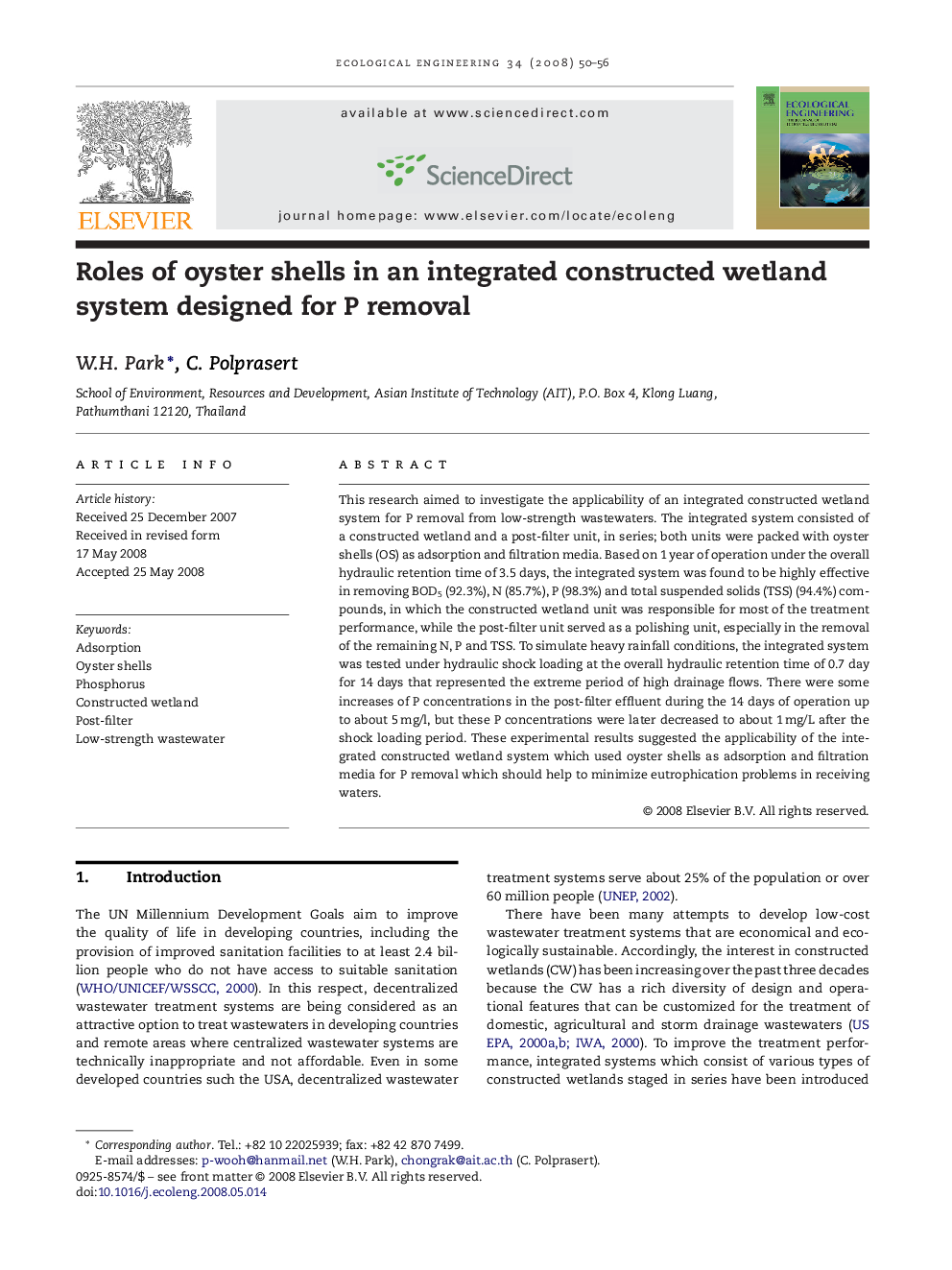| Article ID | Journal | Published Year | Pages | File Type |
|---|---|---|---|---|
| 4390678 | Ecological Engineering | 2008 | 7 Pages |
This research aimed to investigate the applicability of an integrated constructed wetland system for P removal from low-strength wastewaters. The integrated system consisted of a constructed wetland and a post-filter unit, in series; both units were packed with oyster shells (OS) as adsorption and filtration media. Based on 1 year of operation under the overall hydraulic retention time of 3.5 days, the integrated system was found to be highly effective in removing BOD5 (92.3%), N (85.7%), P (98.3%) and total suspended solids (TSS) (94.4%) compounds, in which the constructed wetland unit was responsible for most of the treatment performance, while the post-filter unit served as a polishing unit, especially in the removal of the remaining N, P and TSS. To simulate heavy rainfall conditions, the integrated system was tested under hydraulic shock loading at the overall hydraulic retention time of 0.7 day for 14 days that represented the extreme period of high drainage flows. There were some increases of P concentrations in the post-filter effluent during the 14 days of operation up to about 5 mg/l, but these P concentrations were later decreased to about 1 mg/L after the shock loading period. These experimental results suggested the applicability of the integrated constructed wetland system which used oyster shells as adsorption and filtration media for P removal which should help to minimize eutrophication problems in receiving waters.
